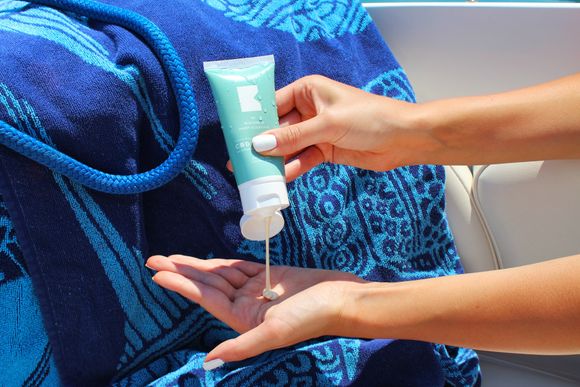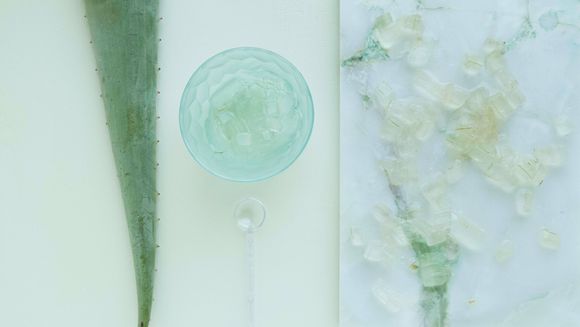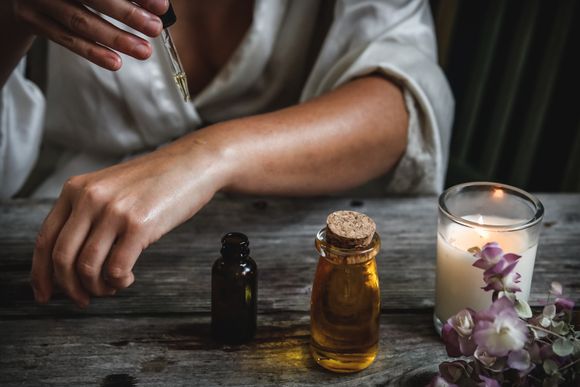Author: Rositsa Tashkova, Master of Molecular Biology and Microbiology
We are used to perceive the sun as a source of life and health, and this is true - thanks to it we have heat and light, and in our skin the exceptional vitamin D is synthesized.
But unfortunately, there it also has a dark side. The sun is also a source of ultraviolet rays (UVA and UVB), which cause the release of a large amount of free radicals into the skin, inflammation (known to us as sunburn) and the occurrence of mutations that can lead to one of the most insidious types of cancer - melanoma or skin cancer.
Therefore, it is very important to protect ourselves from harmful rays on warm spring and summer days. It is a little known fact that clouds do not stop ultraviolet rays and therefore you can "sunburn" even on a cloudy summer day.
What Types of Sunscreens Are There
There are two types of sunscreen - ones that act on a chemical or physical basis.
Physical protection is provided by zinc oxide or titanium dioxide. These substances are harmless and rarely cause skin irritation. Therefore, they are very suitable for sensitive skin, for pregnant women and for children. They repel UV rays and act as a 'shade' over the skin. Their only drawback is that they leave a white film on the skin and on the clothes, especially when with a higher protection factor.
Chemical sunscreens absorb ultraviolet rays instead of repelling them. These creams or sprays contain several different chemicals, because each one blocks only a certain small part of the spectrum of the rays, which is insufficient.

Today, manufacturers use many different natural components to protect the skin from UV rays. These products contain a high level of natural UV absorbers, such as squalan, peptides and nucleotides, which have protected the skin of mammals for millions of years. [ref.1]
Plants That Offer Protection Against Harmful Ultraviolet Rays
Herbal extracts contain many compounds that together can provide sun protection to the skin. A herbal extract can exhibit antioxidant, anti-inflammatory, anti-aging, emollient, melanin-inhibiting, antimutagenic properties and more.
Green Tea and Black Tea (Camellia sinensis)
Green and black tea contain tanins and catechines, which provide protection against the harmful effects of ultraviolet rays both with external application of cool tea and when you drink it.
They have antioxidant, anti-inflammatory and sunscreen properties, and can reduce damage to DNA done by UV rays.
Read more in the article .
Aloe vera
The benefits of Aloe vera (or Aloe barbadensis) have been scientifically proven in all forms of burning, be it radiation, thermal or solar. It has a prophylactic effect if used before, during and after these skin-damaging events.
The plant is used mainly because of its soothing and cooling effect. But it should be considered that the plant is useless if used in a concentration of less than 50% and it is recommended to use 100% to have a beneficial effect.
Aloe vera is an extremely effective means of moisturizing and healing the skin.

Walnut (Juglans regia)
Green shells of fresh walnuts contain the substance juglone. It reacts with keratin in the skin and forms sclerojuglone compounds, which give the characteristic brown color of the skin and have a sunscreen effect.
It is mistakenly thought that the coloring comes from iodine in the husks of the walnut, but they are not rich in this substance, and the color is not due to it.
Rhatany (Krameria triandra)
It has been established that rhatany root extract, containing 15% neolignans, has a photoprotective and antioxidant effect and protects cells from the harmful effects of UVB rays. [ref.2] The study conducted has shown that this extract has a better protective effect than EGCG in green tea.
Plant Oils With Sunscreen and Regenerating Properties
According to some studies, sesame oil blocks 30% of UV rays, while coconut, peanut, cotton and olive oil block about 20% of harmful rays.
Other oils for which a beneficial effect for the skin after sun exposure has been found are:
- Borage (Borago officinalis) - promotes skin regeneration;
- Evening primrose (Oenothera biennis) - also promotes the restoration of the skin and prevents its aging;
- Avocado (Persea americana) - avocado oil is rich in vitamin E, β-carotene, vitamin D, proteins, lecithin and fatty acids, and these ingredients soothe and protect the skin;
- Tea tree (Melaleuca alternifolia) - is contained in many sunscreens that relieve sunburns by increasing blood flow in the capillaries, which leads more nutrients to damaged skin;
- Red algae (Porphyra, Bangiales, Rhodophyta).

All these plants and their extracts and oils can find good application in sunscreen. But to be sure of the quality of the protection offered, it is important to use products with a known sun protection factor (SPF), tailored to the needs of our skin (lighter skin needs a higher protection factor).
Q&A
What sunscreens to use during pregnancy?
As mentioned, during pregnancy you should avoid sunscreens that offer chemical protection, especially those containing oxybenzone, which can cause rare birth defects in the fetus.
Oxybenzone is an organic substance that turns harmful UV rays into heat that is released from the skin. According to a 2019 study, this substance can cause a rare disease in a baby called Hirschsprung's disease. It affects the large intestine. [ref.3]
"Vitamins" for tanning - are they safe and what they contain?
Recently, pills (dietary supplements) have appeared on the market to accelerate and retain tan. They most often contain substances similar to beta carotene - a form of vitamin A, usually cantaxanthin. They may also contain lutein, beta carotene, lycopene and turmeric. These substances give the skin an orange color rather than a healthy bronze tan.
Cantaxanthin can stay in the body for too long - according to some data - between 2 and 7 years [ref.4], and in this period it may manifest its undesirable side effects. And they can be as follows:
- Orange skin;
- Jaundice - yellow skin, yellow eyes;
- Liver damage;
- Rash and skin problems;
- Gastrointestinal problems;
- Damage to eyes and vision, even loss of vision.
The use of these pills is inadvisable!









